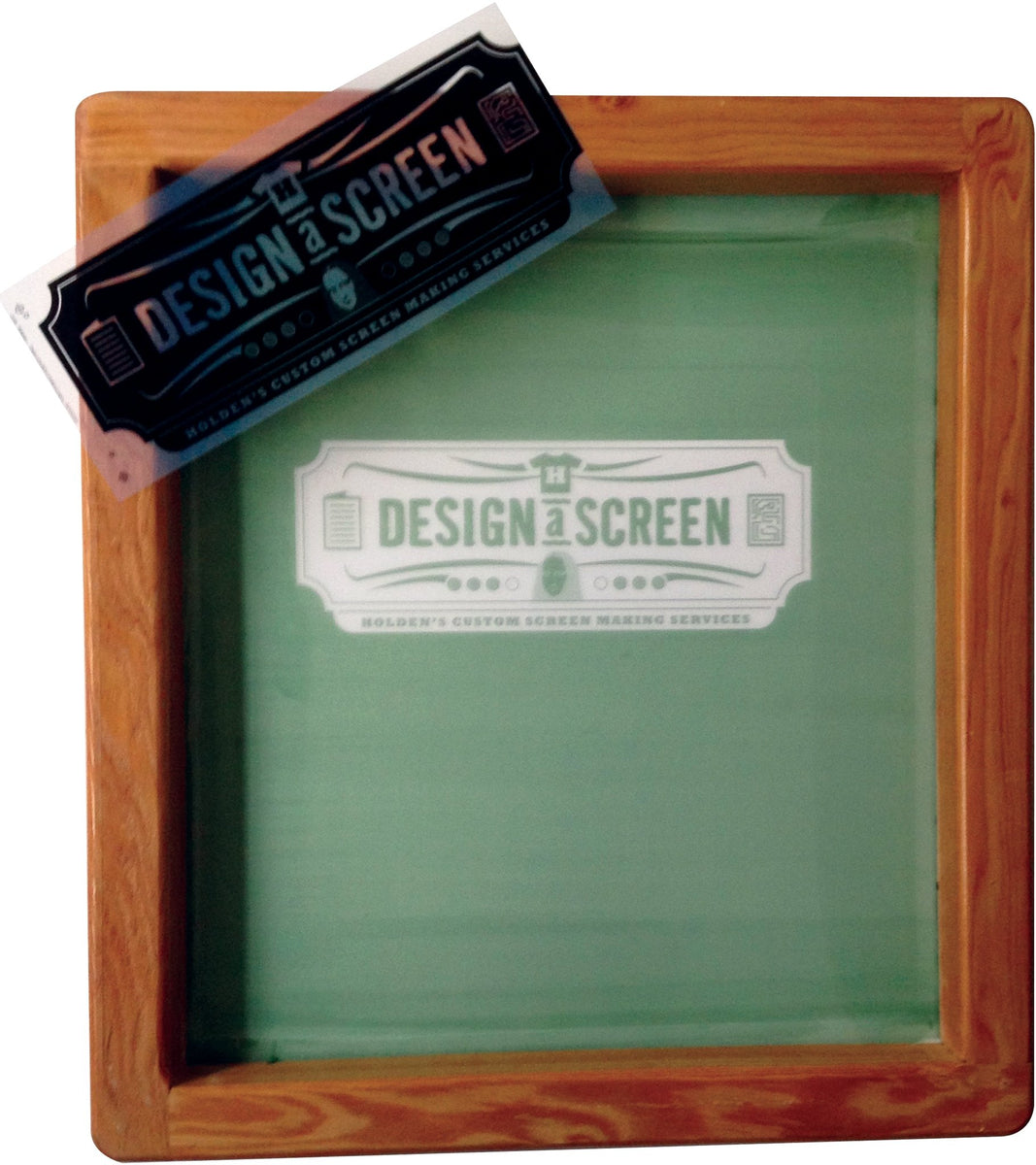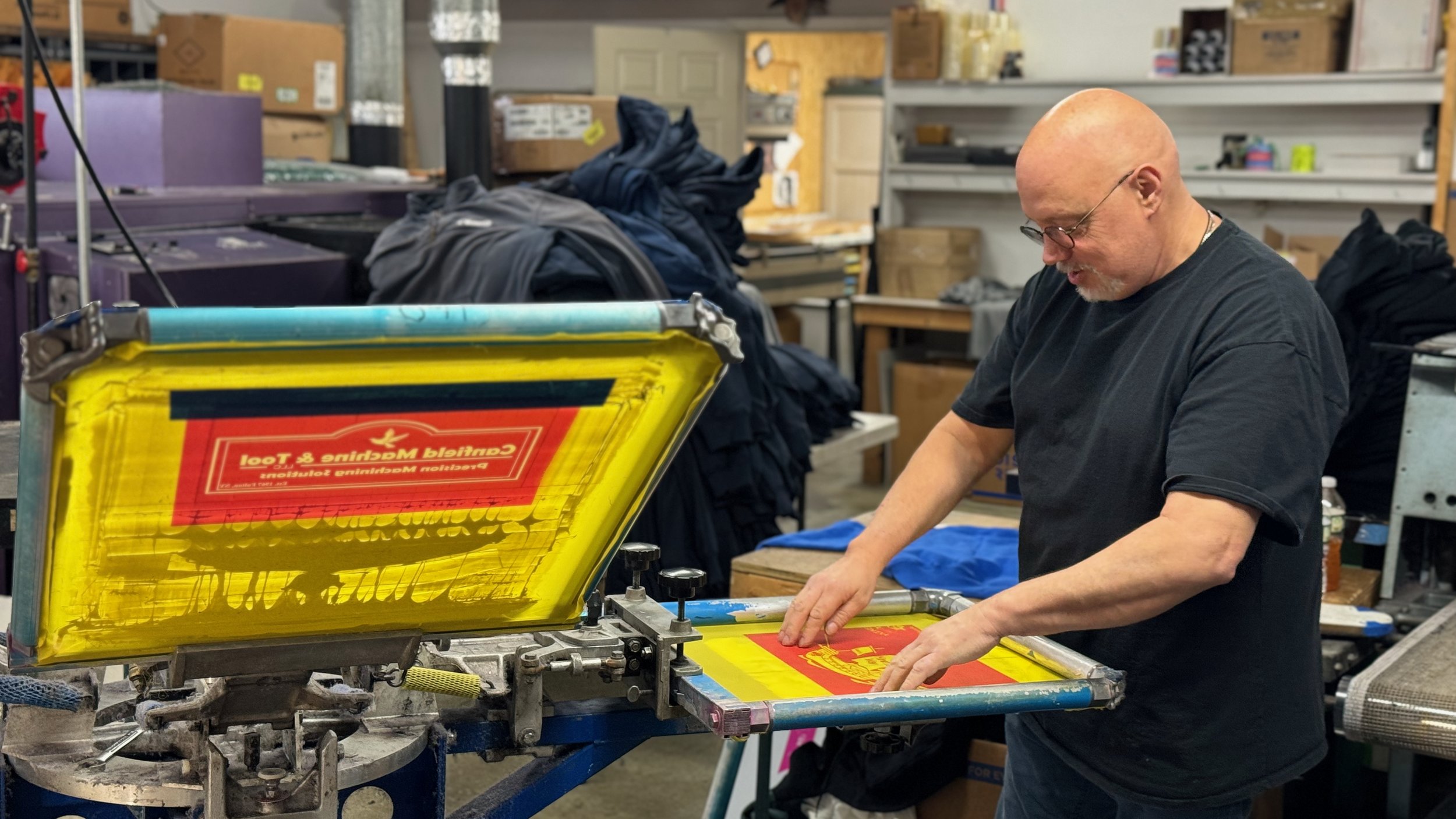Detailed Silk Screen Printing for Custom Art Apparel
Display Printing Uncovered: Whatever You Need to Learn About Tee and Garment Printing Methods
Display printing is a fascinating method that integrates art with strategy, using endless opportunities for imagination. All set to explore the vital elements that make screen publishing an art type?
The Essentials of Display Printing: Exactly How It Functions
When you plunge into display printing, you'll discover it's both a science and an art. At its core, screen printing includes creating a pattern, or screen, that enables ink to pass with just in specific locations (screen printing kit). You begin by choosing your style and preparing your screen with a light-sensitive emulsion. As soon as you reveal this emulsion to light, it hardens, leaving your layout as an adverse space.
Setting the display over the fabric, after that make use of a squeegee to push ink with the screen onto the garment. Each action is necessary, and understanding them will certainly raise your display printing skills, changing straightforward garments into unique, meaningful pieces.
Types of Screen Printing Techniques
When you comprehend the essentials of screen printing, it's time to discover the numerous methods that can elevate your styles. One preferred technique is traditional screen printing, where ink is pushed via a stenciled screen.
If you're intending for fine details, think about discharge printing. This method gets rid of dye from the material, leaving a soft, classic appearance. One more choice is plastisol printing, understood for its toughness and vibrant shades, making it a favorite for lots of brand names. Ultimately, explore halftone printing to create gradient impacts and elaborate layouts. Each strategy has its one-of-a-kind charm, so don't be reluctant to attempt them out to find what fits your style best!
Vital Equipment for Display Printing
To accomplish sensational cause screen printing, having the ideal equipment is essential. You'll require a durable display printing framework, which holds the mesh that moves your layout onto the garment. Next, spend in top notch mops; these are necessary for applying ink uniformly throughout the screen. You'll additionally call for a great exposure unit to create your screens, as well as a washout cubicle for cleaning them after usage. A trustworthy warm resource, like a conveyor clothes dryer or heat press, is vital for healing your prints to ensure longevity. Do not forget a correct work space, outfitted with tables and storage for your materials. Safety gear, such as masks and gloves, will certainly keep you safe from chemicals and inks. With the right devices, you'll be well on your means to creating professional-quality prints.
Choosing the Right Inks and Products
When picking inks and materials for screen printing, you need to think about the kind of ink that works best for your project. Consider material compatibility to ensure your styles look last and fantastic lengthy. Explore green ink options to make your printing procedure much more lasting.
Sorts Of Display Inks
Selecting the right screen ink is crucial for accomplishing lively, long lasting prints that fulfill your project's needs. There are numerous types of screen inks to check out. Plastisol ink is prominent for its convenience and convenience of usage, giving outstanding shade opacity on dark materials. Water-based ink, on the various other hand, uses a softer feeling and is environmentally friendly, making it excellent for those aiming to minimize their ecological impact. Release inks remove dye from the fabric, causing a soft, classic look yet need specific handling. Specialized inks, such as metallic or glow-in-the-dark, can include distinct impacts to your styles. Evaluate your project requirements and select the ink that straightens ideal with your preferred outcome.

Material Compatibility Factors To Consider
Recognizing fabric compatibility is crucial for attaining top notch screen prints, specifically considering that different materials respond uniquely to different inks. Constantly test your inks on sample material to guarantee they adhere correctly and preserve color stability. In addition, maintain in mind that material weight and texture can affect the final result, so choosing the best ink and product combination is important for your task's success.
Eco-Friendly Ink Options
Environment-friendly inks are becoming a prominent choice for screen printers who intend to reduce their environmental impact while preserving quality. When choosing inks, consider water-based inks, which are less damaging and much easier to cleanse up compared to standard solvents. These inks bond well with materials, delivering vibrant outcomes without harmful chemicals. You could likewise check out eco-solvent inks that make use of less unstable natural substances (VOCs), making them a safer option for both your health and the planet.
Furthermore, try to find inks made from renewable resources, such as soy or vegetable-based alternatives. By choosing the best inks and materials, you'll not just produce stunning styles however additionally add to an extra sustainable printing process. Make the button, and your prints will show your dedication to the setting!
Preparing Your Style for Display Printing

Submit Format Requirements
To guarantee your style looks sharp and vibrant on fabric, you'll require to pay close interest to file look at here now style demands for display printing. Beginning with vector data like AI or EPS, as they can be scaled without shedding quality. If you use raster photos, go with high-resolution data, such as TIFF or PNG, preferably at 300 DPI. Stay clear of using JPEGs, as they can lose clearness when resized. Make certain your design has a clear background to stop unwanted white sides on your prints. Lastly, maintain color settings in mind; CMYK is common for display printing, so transform your RGB designs appropriately. By following these guidelines, you'll set your artwork up for an effective print.
Color Splitting Up Strategies
Shade separation is a vital action in preparing your design for display printing, and mastering it can greatly boost your print quality. You'll need to damage your style into private shades, as each shade needs a different screen throughout printing. Start by recognizing all the shades in your layout and produce layers for each one. You can utilize software application like Adobe Photoshop or Illustrator to separate and separate shades successfully. Be specific to save each layer as a different file, typically in a format like TIFF or PSD. This precision not just assures accurate color depiction however the original source likewise streamlines the printing process. By paying interest to color splitting up, you'll accomplish professional and dynamic lead to your screen-printed garments.
Resolution and Dimension
Attaining the best lead to display printing starts with assuring your design has the ideal resolution and dimension. Preferably, your art work should go to least 300 DPI (dots per inch) for sharp, clear prints. Your final item could look unprofessional and pixelated. if you use reduced resolution.
When it pertains to size, take into consideration the dimensions of your print location. Design your art work to match the final print dimension, preferably creating it in the real measurements you'll be printing. By doing this, you'll stay clear of any kind of unexpected scaling issues.
Constantly examine your design in both vector and raster layouts. Vector graphics can be scaled without losing quality, making them ideal for screen printing. Preparing appropriately will guarantee your style looks outstanding on every garment!
Step-by-Step Screen Printing Refine
Screen printing is a dynamic process that permits you to produce lively designs on various surface areas. To get begun, you'll require a display, emulsion, and your picked ink.
After rinsing the unexposed solution, your display prepares. Establish it up on your printing surface and align your garment underneath it. Pour ink onto the screen and utilize a squeegee to press the ink via the pattern onto the fabric. Lift the display thoroughly and let the print dry. Cure the ink using heat to ensure durability. That's it! You've efficiently display printed your layout.
Tips for Successful Screen Printing Projects
While you're diving right into like it your screen printing tasks, bear in mind that prep work is crucial to success. Beginning by collecting all your products-- inks, squeegees, screens, and garments. A clean office helps protect against unwanted mistakes, so clean up prior to you begin.
Next, validate your artwork is high-resolution and properly sized for your garment. Evaluate your display for proper direct exposure and clean it extensively to stay clear of smudges. When mixing your inks, comply with the supplier's standards to attain the appropriate consistency.
During printing, apply even stress with your squeegee for regular results. Don't rush; take your time to verify each print satisfies your requirements. After printing, let your garments dry completely before dealing with or packaging them.
Lastly, always maintain a sample of your help future recommendation. This means, you can analyze your development and enhance your techniques gradually. Delighted printing!

Regularly Asked Questions
For how long Does It Take to Set up a Display Printing Work?
Establishing a display printing work usually takes about thirty minutes to an hour. You'll prepare the screens, mix inks, and change the press. The moment varies based on intricacy and experience, so stay organized!
Can I Print on Different Textile Types Utilizing the Very Same Technique?
Yes, you can print on various textile kinds making use of the very same strategy, however you'll require to change your settings and inks. Some materials soak up ink differently, so trying out guarantees the best outcomes for each product.
What Are Typical Mistakes to Prevent in Display Printing?
When display printing, avoid typical blunders like making use of the wrong ink, overlooking proper direct exposure times, or avoiding pre-press checks. Always evaluate your configuration and keep clean displays to assure quality results each time.
Just How Can I Correctly Tidy and Preserve My Display Printing Equipment?
To appropriately tidy and maintain your screen printing devices, you ought to consistently clean screens with appropriate solvents, inspect squeegees for wear, and ensure all devices are kept dust-free and completely dry. Consistency improves and stops pricey repair services efficiency.
Is Display Printing Eco-friendly Compared to Various Other Approaches?
Display printing can be much more eco-friendly than various other techniques, particularly if you make use of eco-conscious products and water-based inks. By picking lasting supplies and techniques, you decrease waste and decrease your effect on the planet.
Display Printing Uncovered: Whatever You Need to Know Regarding Tee Shirt and Garment Printing Methods
At its core, screen printing involves producing a pattern, or display, that enables ink to pass via just in particular areas. Setting the screen over the fabric, then utilize a squeegee to push ink through the display onto the garment. One preferred approach is conventional screen printing, where ink is pushed with a stenciled display.When selecting inks and products for screen printing, you need to take right into account the type of ink that functions ideal for your job.